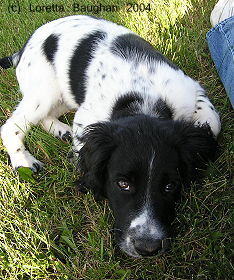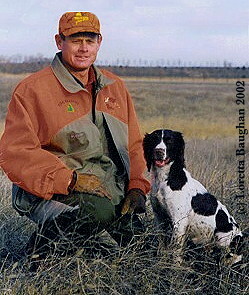
Dog Training: Results at the Speed of Light - How to Train Your Dog in Three Short Lessons
Now, wouldn’t that be a great title for a dog training book or video? You could pick out a pup and grow it for six months then give lesson #1 on come and hup. Grow it another six months and give it lesson #2 on range control and retrieve to hand. After another six months, give it lesson #3 on blind retrieves, calling off missed birds and hand signals. Then enjoy the dog for its hunting days without any more training.
Dog training would be easy, simple and always right on. If you were unsure how to do these three training steps, just call your local pro. He would schedule your dog in for those three lessons and "poof" magic would be worked.
I think you can see where I am heading with this.
Dog growing, training and learning just doesn’t happen that way. As anyone who has ever put a leash on a dog knows, it is by no means automatic. Some dogs catch on very quickly to the lesson being taught. We have a young pup who is just a sparkler. She is retrieving clip wing pigeons right to hand from as far as twenty yards away. She is just so alert and keyed. Other dogs take many days to achieve simple things, but it is a process.
Dog training is a process from day one. Every time the pup is out and about, he is being trained. Lessons are being learned about dominance - who’s in charge? Do I decide to do something or will the boss tell me what to do? How do I get out the door - barking for attention or barking to tell my owner what to do? Think about your pup and the things it is telling you and you will soon realize that the pup will take charge, if allowed to do so.
"Channel the energy and channel the attention of the pup and no problem will develop."
That lesson, #1 - come and hup - happens in many little lessons every day. Practice the hup... maybe only for one second each time but twenty times per day, 180 days and the pup will have hupped 3600 times. Say "come" when the pup is coming right at you. After a few hundred times when the pup has found good things by you, he will come willingly. Tell the pup to "kennel" every time you put him in a run, five times per day, 180 days and you have lesson #1 done 900 times.
This same philosophy applies to lesson #2 and lesson #3. The key to all of this is to know what to do when the pup begins to defy your simple lessons. The lesson for the handler is to be in the position where you can enforce the command. Never give a command unless you are prepared and able to follow through and are prepared to offer an alternative. This must be in line with what your goal is for the pup in the long run.
Tell a child to quit running in the house, a common problem with young people, then turn away and ignore him. In less than ten seconds, the child is back at a gallop. Instead, tell a child to quit running around the house and provide an alternative to channel his attention - or better yet, provide a challenge so the child never learns to run in the house.
Channel the energy and channel the attention of the pup and no problem will develop. There aren’t any problems... just training situations.
Making the most out of a training session seems to be a stumbling block for many new dog owners. Many people seem to have the attitude that training is only when you schedule it and any non-scheduled training time is OK for the dog just to do what it wants. Unfortunately, if you only train during your scheduled time for training, when you have thirty minutes or an hour, you will miss the whole point in training a pup.
Training is an ongoing process for the life of the dog. There is no set end and no set beginning to the training process. There is a beginning and an end when you send the pup to a trainer. However, on a day to day basis training goes on at any time when the pup is in your command. Training is making the most of an opportunity every time you are with the dog. Early in the morning when you get up, let the dog out, take your cup of coffee and go out with him. When you go out to get
the mail, put the dog on a leash, walking him at heel and make him wait by the end of the driveway while you get the mail. Take a power walk down the sidewalk with your dog at heel and make him walk with you. If you are talking to a neighbor, have your dog sit quietly beside you. When you go out the door of your house, have the dog sit and wait by the door until you tell him he can go out. All of these little things are called "dog training" and we all can get lackadaisical many times throughout the day.
Dogs learn by repetition and consistency in doing the right things - or by doing the wrong things. So, each time the dog is out and about do the right thing. Think about the training opportunities you have on a daily basis with the dog when he is in the house with you. If no one is giving the dog any attention, then put him in his run or crate him in the house. The early training is very crucial for starting a dog on a lifelong course for learning and becoming a better dog each year.

|
|
|
| Bookstore | The Bookshelf | Advertise on SJ | Classifieds | Resources | Events | NEW! Point Standings | Letters | Archives | Spaniel Journal | |


